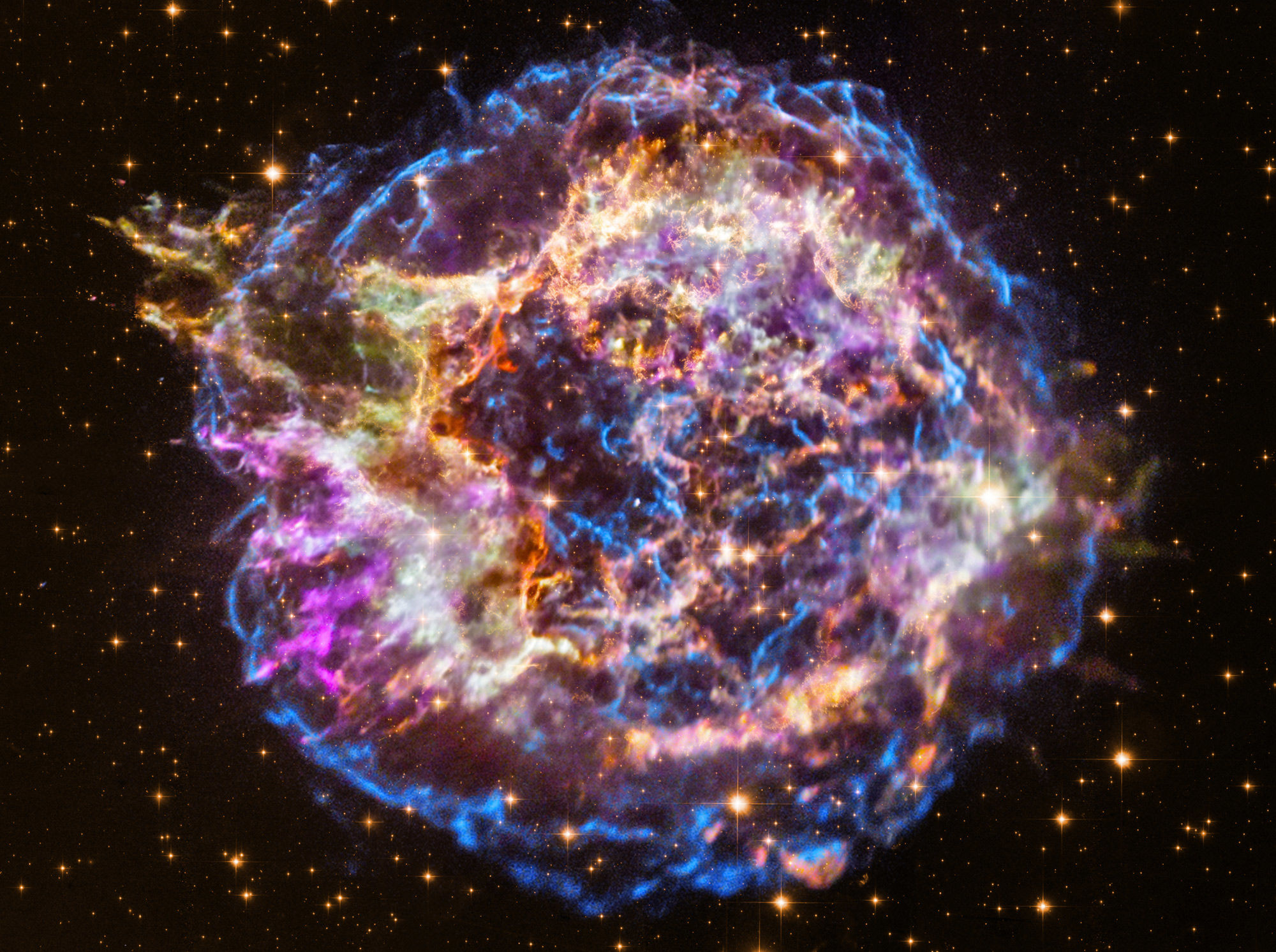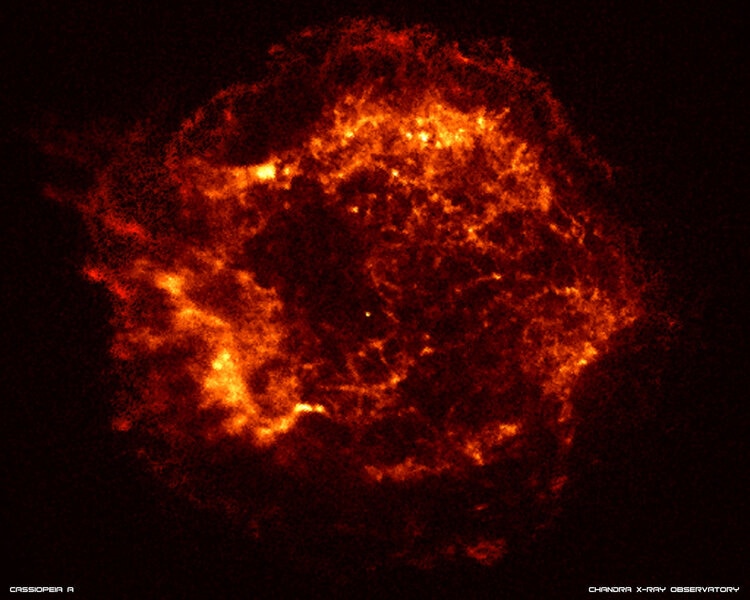Create a free profile to get unlimited access to exclusive videos, sweepstakes, and more!
Watch the expansion of the Cas A supernova remnant with your own eyes!

Wow. The Chandra X-ray Observatory just celebrated its 20th anniversary of being launched into space! It roared into orbit on board the Space Shuttle Columbia on July 23, 1999.
Chandra was a revolution in X-ray astronomy. This high-energy form of light can't penetrate Earth's atmosphere, so you have to launch telescopes into space to see it. On top of that, you can't easily focus X-rays, since they tend to pass right through mirrors. Awkward. So Chandra uses a set of nested, curved sheets of finely shaped metal set almost edge-on to the incoming X-rays. The photons hit the sheets at extremely low angle and graze off it like a rock skipping on water. In this way, the light is gently coaxed into moving in a different direction, so it can be focused this way.
Because of this it could see fainter objects giving off X-rays, as well as see more detail in them, too. In fact, after some testing in orbit, one of the first objects Chandra aimed its eye at was the remarkable supernova remnant Cassiopeia A (or Cas A for short). It was discovered decades ago as the brightest radio source in the constellation of Cassiopeia, but oddly isn't very bright in visible light — there's a lot of dust and material in the galaxy in that direction, which blocks the light we see. But X-rays can go through that stuff, so when Chandra took a look at it we got the best view we've ever seen of the object.
Over the years since then, Cas A has been a favorite target for Chandra, and has been reobserved many times. Now here's a thing about the debris blasted away from a star that exploded: It's moving fast. Thousands of kilometers per second. As it happens, that stupendous velocity is diminished by distance —Cas A is about 11,000 light years from Earth — so it appears to move slowly. But Chandra's vision is sharp, so over the decades since that first observation, subsequent ones have shown its motion as it expands!
Whoa. You are seeing an object in deep space moving over human timescales! Incredible.
The video shows Chandra images from 2000 to 2013 and repeats several times; the expansion of the debris and the repetition makes it look like Cas A is breathing. In reality what you're seeing is material flung outward by the titanic explosion of a massive star at the end of its life, screaming away into space.
The video uses a Hubble image as the background, and you can see that some of the filamentary material (colored gold) doesn't move; that's used as a baseline so you can better see the expanding material in motion seen by Chandra.
Surrounding the debris is a thin blue line. That's the interface between the supernova debris moving outwards and the gas that was floating around it in space before the explosion. That material is getting slammed, hard, by the supernova debris, and getting violently compressed. This creates a shock wave, like a sonic boom, moving outward through the material, away from the center. The gas in the shock gets heated so hugely by this that it expands rapidly, itself sending a shock wave back into the supernova debris. This is called a reverse shock, and it heats the debris up. A lot. Magnetic fields embedded in the material also bat around electrons pretty hard, which respond by giving off X-rays that Chandra can see.
All these complicated motions and energies play out in the Chandra image. That's when astronomers spotted something new: The arrows point to denser knots of material that are somehow causing the reverse shock to move even more rapidly, and that material appears to be moving inward, not outward. The magnetic field in the reverse shocked material is getting stronger in these knots, too, so they produce even higher-energy X-rays. That's pretty unusual for such a young supernova remnant — the light from the explosion of the star that formed Cas A reached us just 350 years ago, so we see it at an age of just three-and-a-half centuries.
This shows that there's a lot we're still learning about Cas A, even though it's one of the most well studied objects in the sky. But it's a bit difficult to observe due to the dimming by dust, so observatories like Chandra are important to our understanding it. Not only that, but it's Chandra's longevity that's proving to be critical; we need to watch objects like Cas A for years, decades, to figuring out what it's doing.
Congratulations to everyone on the Chandra team, past, present, and future, for the amazing work you've done. Because of you, we are literally seeing the Universe in a whole new light.
















